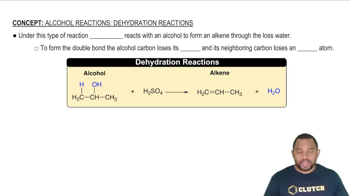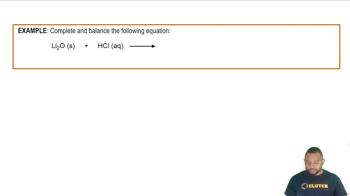Here are the essential concepts you must grasp in order to answer the question correctly.
Balanced Chemical Equations
A balanced chemical equation represents a chemical reaction where the number of atoms for each element is the same on both the reactant and product sides. This is crucial for obeying the law of conservation of mass, which states that matter cannot be created or destroyed in a chemical reaction. Balancing involves adjusting coefficients in front of compounds to ensure equal atom counts.
Recommended video:
Balancing Chemical Equations
Hydrolysis Reactions
Hydrolysis is a chemical reaction involving the breaking of a bond in a compound by the addition of water. In the context of the question, Cl₂O₇ reacts with water to form hydrochloric acid and other products. Understanding hydrolysis is essential for predicting the products of reactions involving oxides and water.
Recommended video:
Alcohol Reactions: Dehydration Reactions
Oxides of Chlorine
Chlorine oxides, such as Cl₂O₇, are compounds formed from chlorine and oxygen. Cl₂O₇ is known as dichlorine heptoxide and is a powerful oxidizing agent. Recognizing the properties and reactivity of chlorine oxides helps in predicting their behavior in reactions, particularly their interaction with water to form acids.
Recommended video:

 Verified step by step guidance
Verified step by step guidance

